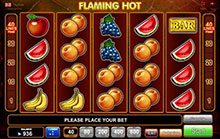 Their number is defined as follows: the possible number of open cards in the hands of the dealer - 10, and the possible hands of the player - twenty-seven. Multiply the first number by the second and we get 270 combinations, which can be extremely difficult for an uninitiated player to learn.
Their number is defined as follows: the possible number of open cards in the hands of the dealer - 10, and the possible hands of the player - twenty-seven. Multiply the first number by the second and we get 270 combinations, which can be extremely difficult for an uninitiated player to learn.
You should not be afraid of the number "270". Many of the combinations simply do not need to be remembered, because they are united by peculiar group features. For example, in a combination, when the player has eleven points, you should double if the dealer has any card other than an ace. That is, it makes no sense to remember the combinations separately for two, three and further.
Below are 26 simple blackjack rules, which in general sum up all 270 combinations.
If you are a tough guy, you are:
stop dialing at 17 or more;
Double at your 11, if the dealer has everything but an ace;
Double by 10 if the dealer has neither an ace nor a 10;
Double by 9 against 3 to 6 cards;
If the number of points is less than 12, take it;
against ten on your 15 do surrender;
refuse to play for half a bet (surrender) if you have 16 against 10;
against 7 or more - take;
on your 12 vs. 2 and 3, take;
in other possible situations - do not take.
In case of gentle comibination you:
on the 19th or 20th stop taking;
at 18 against 7 and more - stop;
against 7 and above - take on the rest of the cards;
Double with any points against 5 and 6;
Double against 4 on the soft 15-18;
Double against 3 by 17-18;
Double against 2 by 18;
in all other combo books - take.
When you have couples, you:
Split the eight and the ace;
You do not sleep dozens;
against nine and less you double at two 5;
Do not sleep nine if the dealer has 7, 10 or an ace;
on any pairs up to and including seven, take against the eight or more (except for the dealer's combination of 8 and 9, you have a five: then double it);
at two 6 or 4, take a card if the dealer has 7;
At two 4, take if the dealer has 4 or less;
In other situations, you will split.
Surrender strategy
This strategic move is one of the main techniques in blackjack, which is practically not used by beginners. Surrender is an opportunity to voluntarily refuse to continue the game with the condition of keeping half of the bet made. This rule does not work in all online casinos. Many of them motivate the refusal to use it as an allegedly existing discontent of partner games, which are irritated by such "flight" of opponents. In fact, everything is explained by the fact that the slease is much more profitable to the player than the institution.
The meaning of surrender is the right to play the game after receiving two cards, saving 1 / 2 of its bet. Cards returned croupier, the game does not stop. However, if the dealer has an ace, then you will not be allowed to slease any casinos.
Below are the combinations for hard cards (without an ace), when playing 5-6 decks and stopping to gain any 17 points.
So, it is necessary to apply surrender, if:
Ace at the dealer, your number of points is 5-7 or 12-17. The dealer has 10, you have from 14 to 16 (even if the latter is two eights, the sarenda here is preferable to a split). You have 16 against 9.
As you can see, the number of combinations, in which it is possible to make a surrender, is not so great. But the amount of money that this strategy can save you for more successful situations - significantly. In general, this is a reasonable and winning strategy, and where casinos allow you to do so, it should be applied.
The goal of the game is
The goal of the game is to beat the dealer in one of the following 2 ways:
- gain more points than the dealer, but no more than 21 points;
- allow the dealer to score more than 21 points without having to make an overdose in his or her hand.
If a player has scored more than 21 points, this situation is called a bust, and the winning party is considered a dealer, regardless of his hand. The same applies to the dealer. If a player has completed a set of cards and has scored a total of 21 points or less, and the dealer has scored more than 21, the player wins.
If both the dealer and the player have scored the same number of points (none of them has collected a combination of 'blackjack'), a draw is awarded and the player gets his bet back.
If neither the dealer nor the player has an overdose, the one with the most points in his hand wins.


